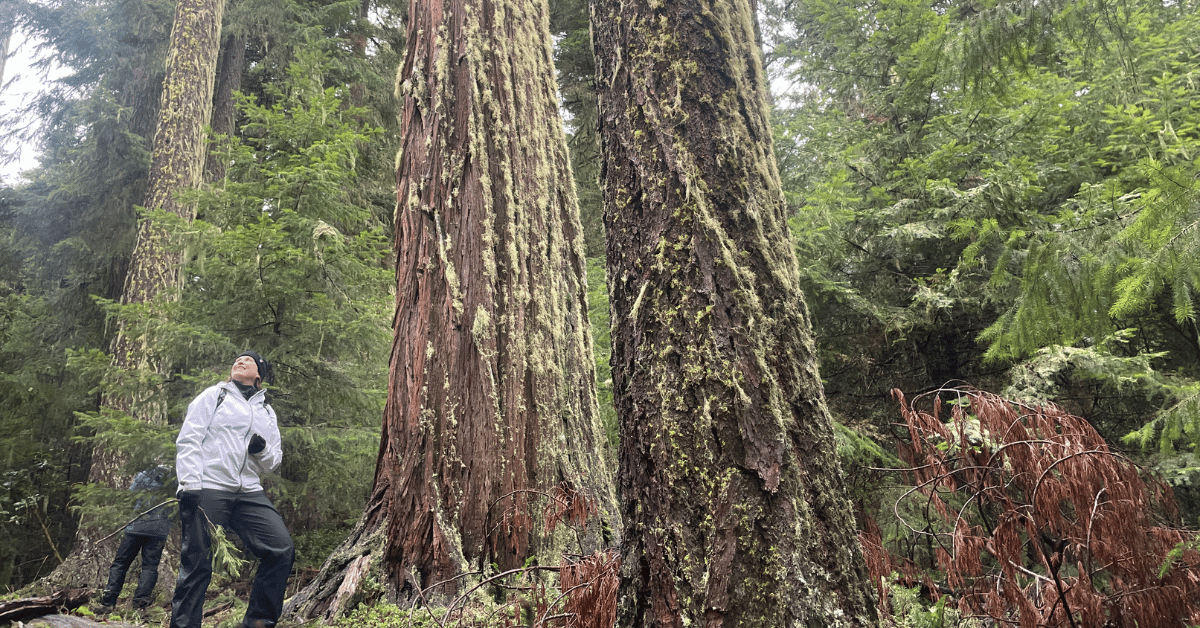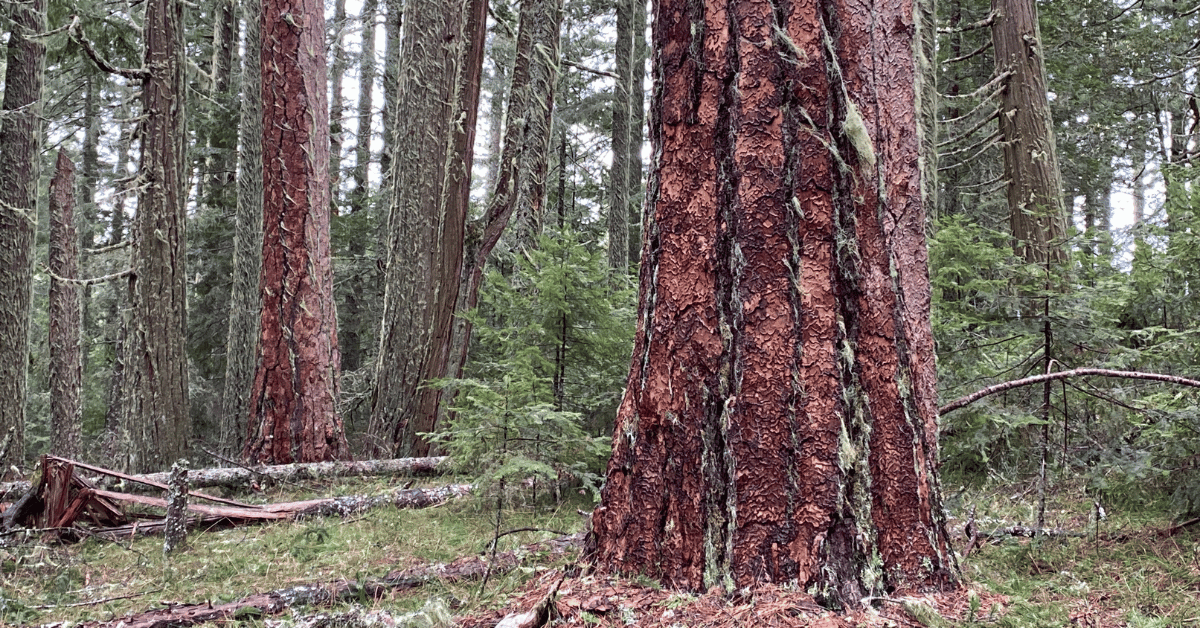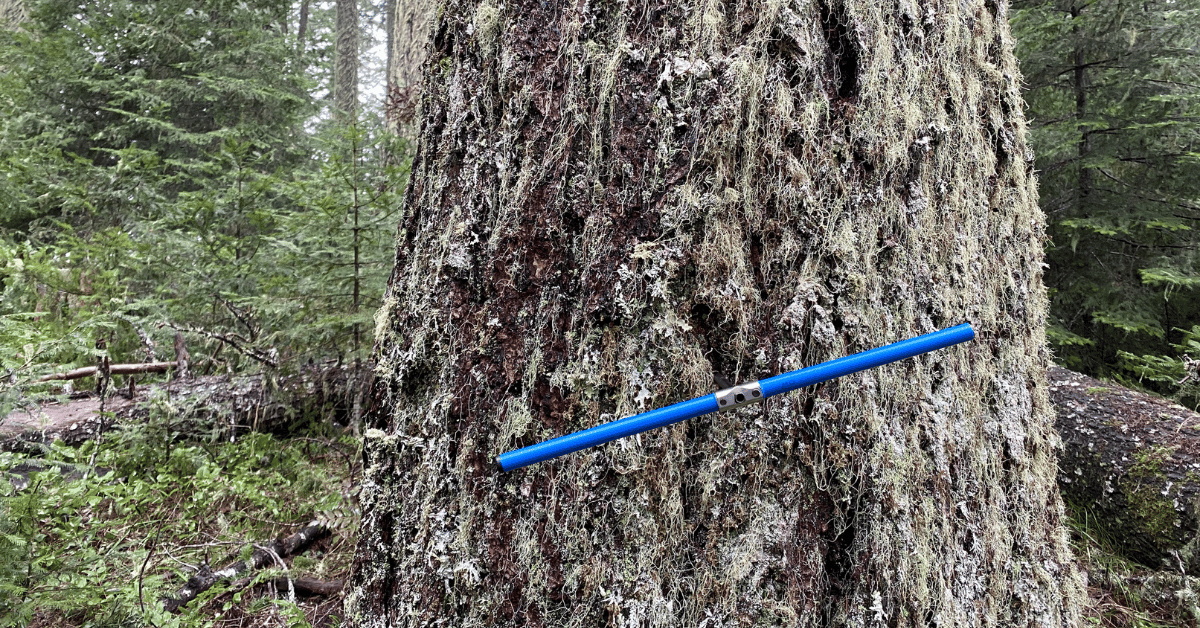
Rain fell steadily on our drive into the mix of public and private lands southwest of Roseburg last month, the clouds and mist casting an eerie feel over the stark clearcuts we drove through on the way to a proposed logging unit in the 42 Divide Project area. In November 2021, the Roseburg District of the Bureau of Land Management (BLM) sent an initial proposal for the 42 Divide Project out to the public for comments, calling for logging over 5,000 acres of forests up to 200 years old.
Named for the fact that it is on either side of Hwy 42, the project area around Tenmile and Camas Valley also marks the divide between the Umpqua River and Coquille River drainages. A unique and diverse forest thrives here in the transition zone between the moist Coast Range and the dryer forests of southwest Oregon and the Klamath mountains.

The sky cleared enough so that we stayed dry as we hiked to the top of a rocky ridge where our maps (satellite-based data showing canopy height) showed that the tallest trees in this area were clustered. The forest exemplified the diversity found in this area - mixed with the grand fir, hemlock, and Douglas-fir so typical of wet western Oregon were incense cedar, Ponderosa pine, and evergreen live oaks more often found further south or east.
Classified as a 190-year-old forest by the BLM’s data, we found legacy trees well over 400 years old with gnarled branches and scars from a long-ago fire, rocky cliffs with madrone and live oak, and lichen-draped Douglas-firs covering the slope in the heart of the proposed logging unit. Using an increment borer tool to drill into a typical-looking Doug-fir tree, we removed a core and squinted as we counted well over 200 rings.

The early maps of the 42 Divide project offered by BLM don't show exactly what kind of logging will be done where. In this unit, and more than 3,000 acres of other forests classified as “dry Late Successional Reserve”, logging, prescribed fire, and other vegetation removal can be done, removing trees up to 200 years old so long as it meets certain criteria for threatened northern spotted owl habitat. On the nearly 2,000 acres of the project classified as “Harvest Land Base” intensive logging, leaving few trees, is proposed in forests ranging from young replanted plantations 30-60 years old to mature forests up to 200 years old. Overall, the main purpose of the 42 Divide project is to meet timber harvest goals.
What we do know about the logging that will happen in this forest landscape is that the already fragmented landscape (private industrial timber lands are mixed throughout the project area) will be further broken up by roads and patches of heavy logging. Such logging, especially in mature and old-growth forests, harms the ability of the forest to sequester and store carbon in trees and soil, to provide quality wildlife habitat, and to clean the air and water we all depend on.
As a project that targets logging of mature and old-growth forests, the 42 Divide project has been highlighted in the Climate Forests Campaign’s Vanishing Climate Forests Report. Last April, President Biden issued an executive order aimed at identifying the threats to mature and old-growth forests, and to protect them as a natural climate solution. Based on the direction of this Order, the US Forest Service recently withdrew the decision for the Flat Country project on the Willamette National Forest, which would have logged mature forests similar to those in 42 Divide. The BLM, whose projects in southwest Oregon loom large in the Climate Forests report, should also halt plans for projects like 42 Divide in order to comply with the EO and better protect our climate, wildlife, and waters.
Sign the petition below to urge President Biden to take the 42 Divide logging sale off the chopping block and protect other vital climate forests across the country!

